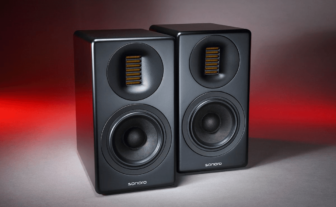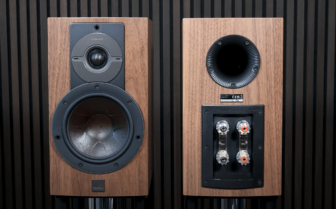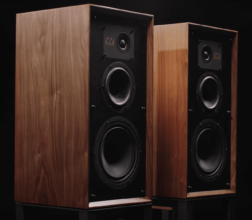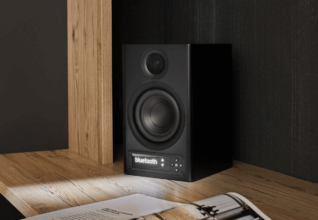JBL Stage 240B Review
In the 1980s, JBL introduced the Control One, which quickly became a legendary speaker. It was incredibly small for its time, virtually indestructible, energetic, and very affordable. Now, can the Stage 240B live up to this cult status?
By Frederick Heinz
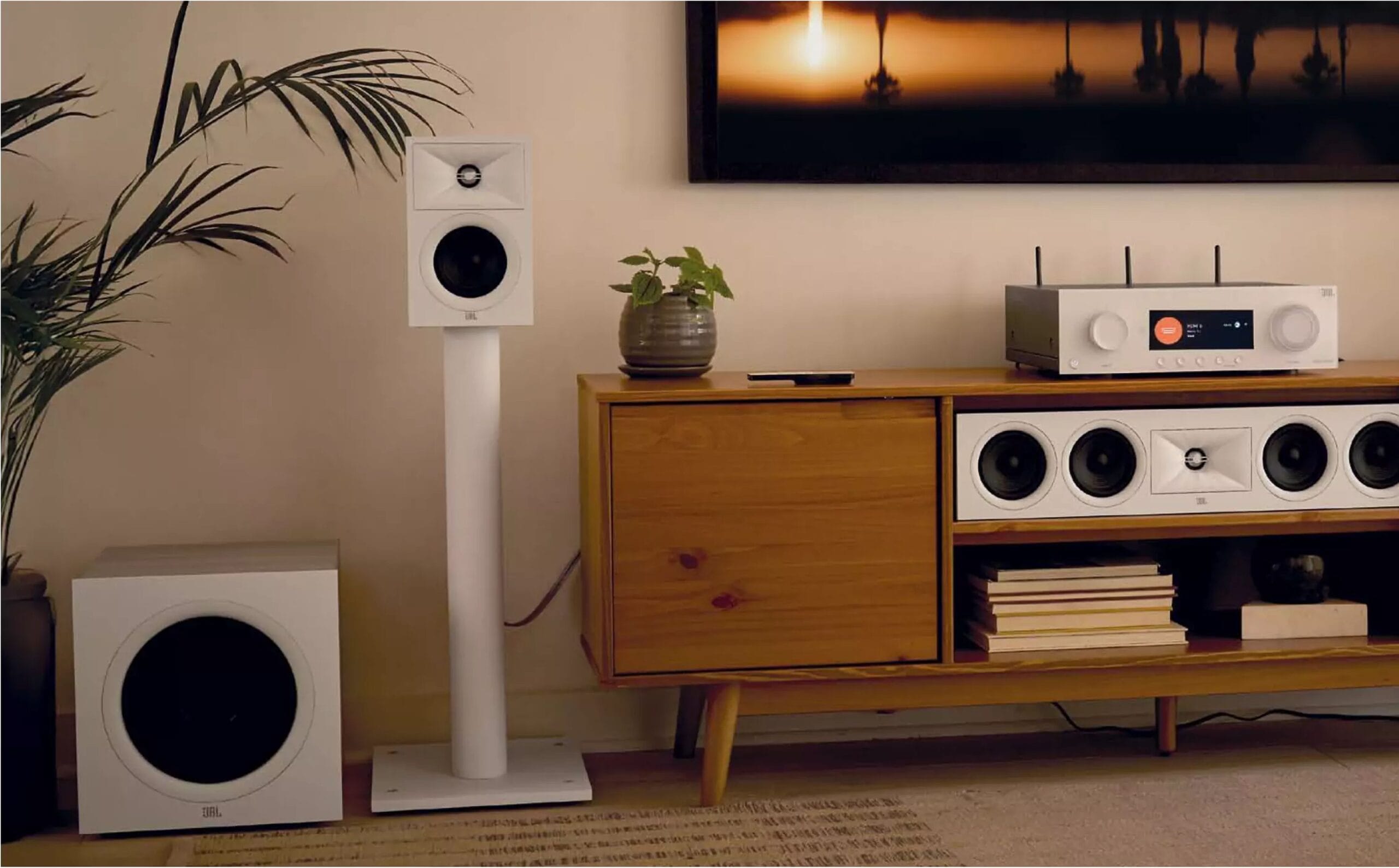
Traditional hi-fi setups—with passive speakers, an amplifier, and a source device—have been struggling for several years. Younger listeners often prefer Bluetooth speakers, active speakers, party boxes, or soundbars, and JBL has contributed to this trend with products like the Flip Bluetooth speaker.
With its Stage 2 series, the California-based company is breathing new life into tried-and-true hi-fi systems. The smallest model in the lineup, largely due to its compact size and small woofer, may remind you of the classic JBL Control One. But that’s where the comparison ends: the two-tone enclosure, ribbed cone, and HF waveguide make the 240B look more refined, and it plays in a different league both acoustically and in terms of cost.
Modern Design
Visually, the 240B is much more upscale than the bestselling Control One: no plain white or black plastic enclosure, no asymmetric driver arrangement with a front bass reflex port, and no metal grille.
Instead, the front baffle is visually and geometrically distinct, the drivers are symmetrically placed, screw heads are hidden by a trim ring, the fabric grille attaches magnetically, and the cabinet has a wood-like finish. All of these details make the 240B much more appealing than the 1980s “plastic bomber” Control One.
Proven Technology
The 25-millimeter tweeter features an anodized aluminum diaphragm whose HDI waveguide geometry (High-Definition Imaging), taken from JBL’s premium HDI Series, and it is the acoustic centerpiece of the 240B.
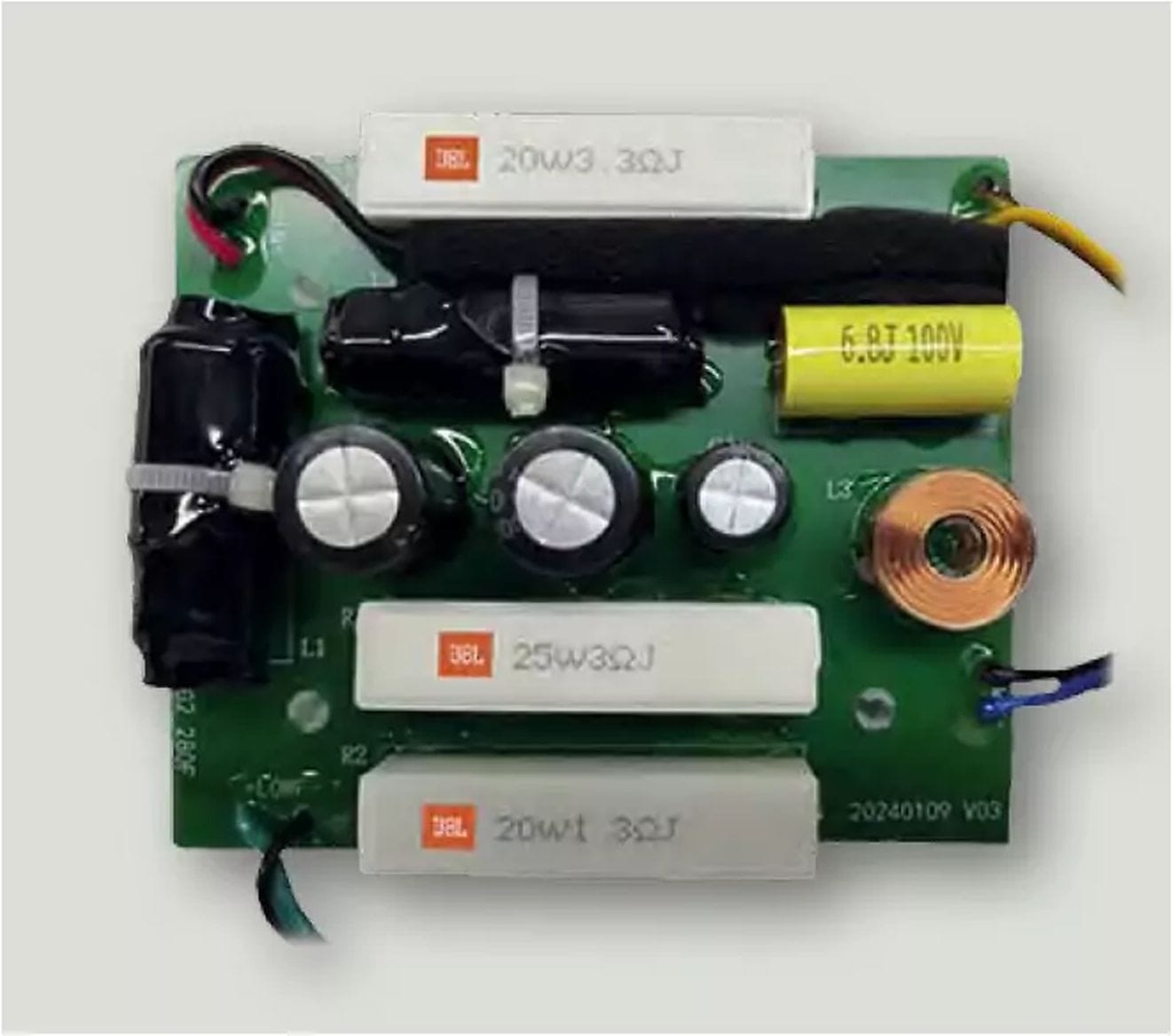
STANDARD PARTS: JBL opts not to use pricier parts like air-core coils or film capacitors in the 240B. Cement resistors and electrolytic capacitors predominate, along with a standout yellow polypropylene capacitor.
The metal dome can operate at relatively low frequencies and is crossed over steeply at 1400 Hz. This combination performs admirably, showing only minor ripples above roughly 10 kHz that are inaudible in practical listening.
The 240B’s woofer uses a poly-cellulose cone pressed into a ribbed shape for extra rigidity. In the low end, the modest 4.5-inch driver is helped by a simple rear-firing bass reflex port.
The sturdy single-wiring terminal on the 240B is straightforward, and after removing protective caps, it also supports banana plugs.
Flexible Usage
Because they’re so compact, the 240B is not the best choice for providing full-range sound in a large room. These speakers are more at home in smaller spaces, with a shorter listening distance, and they work well near walls or in a corner. Despite having a rear-facing bass reflex port, the 240B can be placed directly against a wall. In fact, a wall bracket is included, so you can mount them on a desk for nearfield, use them as surround speakers on a wall, or place them up front on a sideboard or on stands.
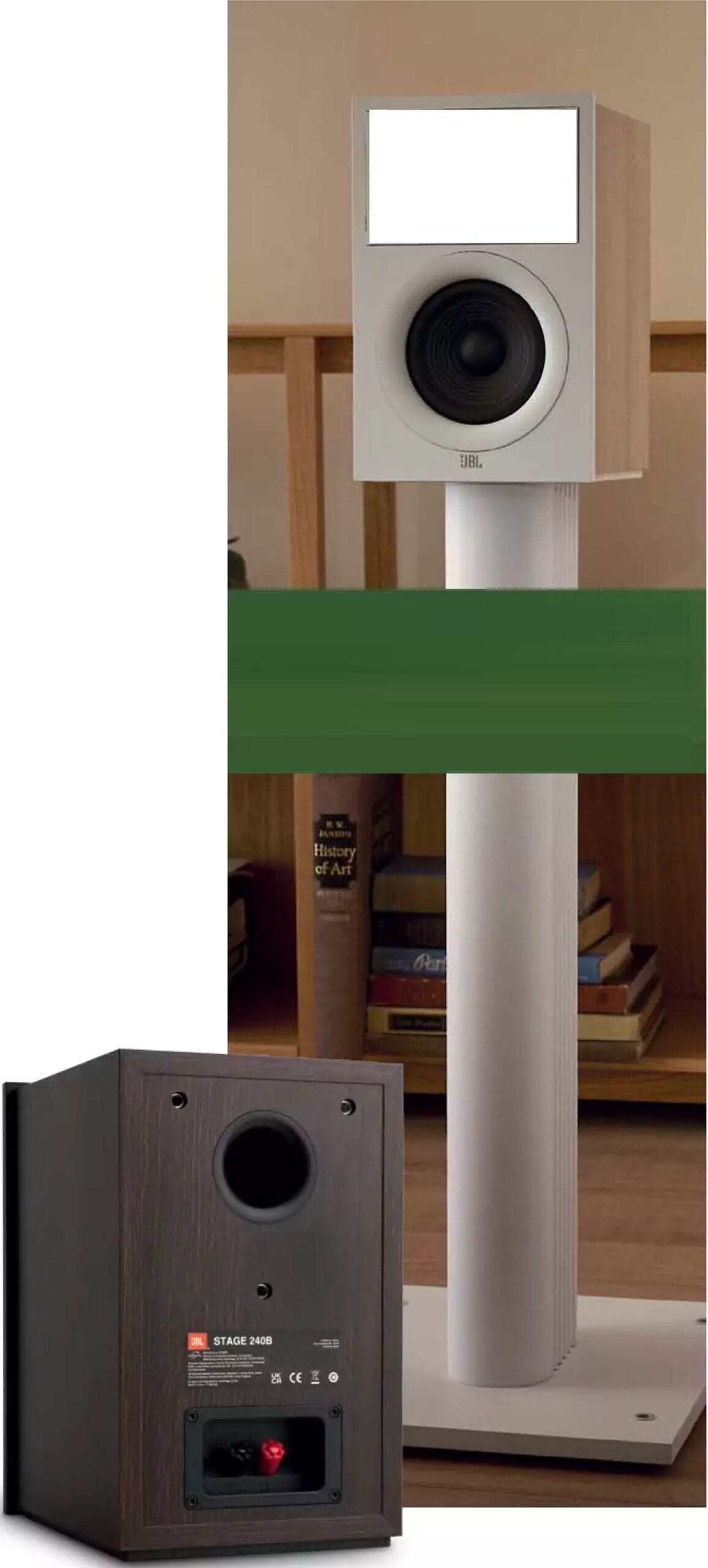
A RARE SIGHT: You don’t often see the JBL 240B free-standing on speaker stands. It’s possible, but if you go that route, using a subwoofer is recommended.
WALL DECOR: Above the bass reflex port, there are threaded inserts on both sides for attaching a wall bracket.
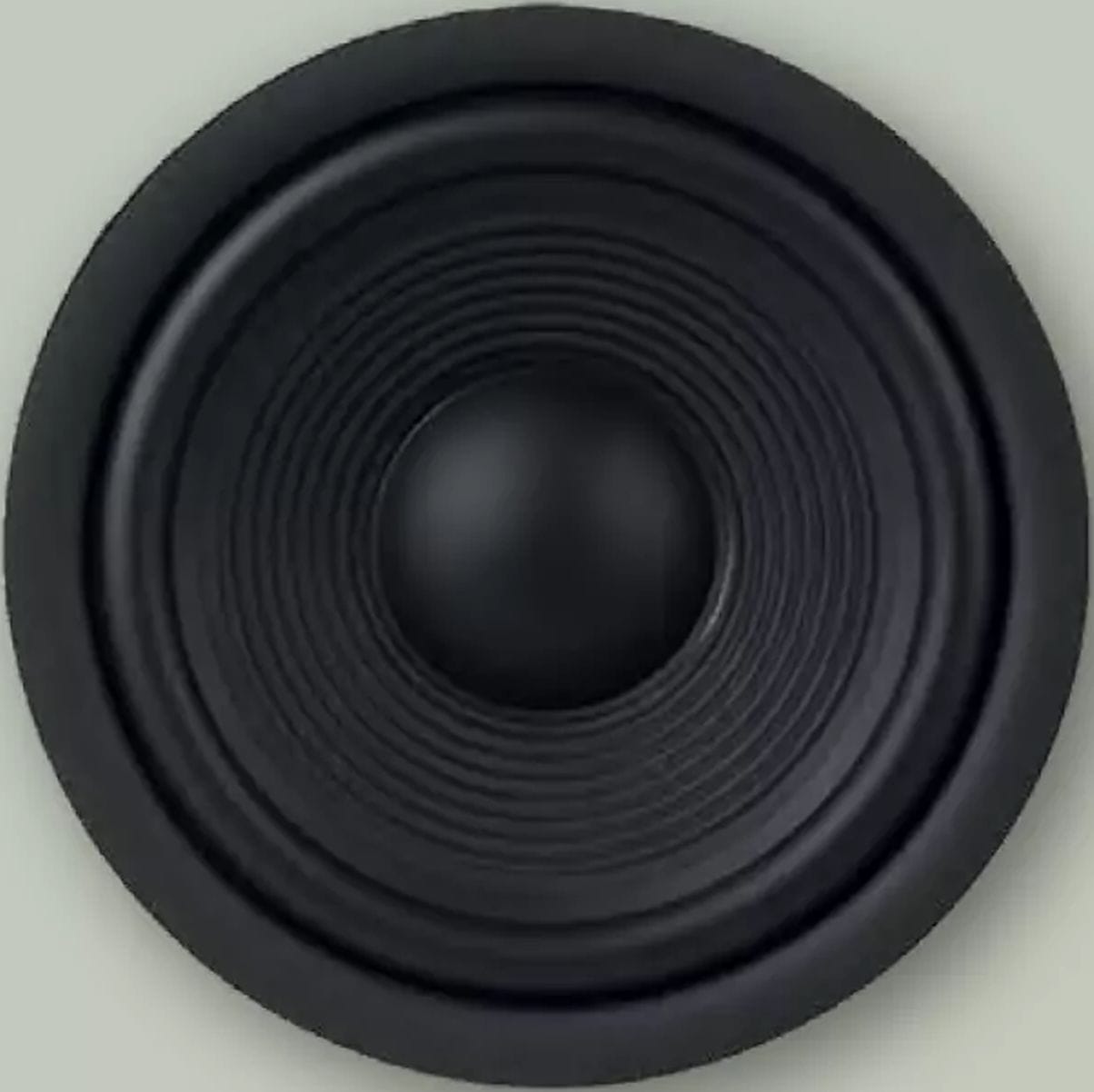
TAKE YOUR TIME: The small woofer in the JBL 240B needs some break-in time.
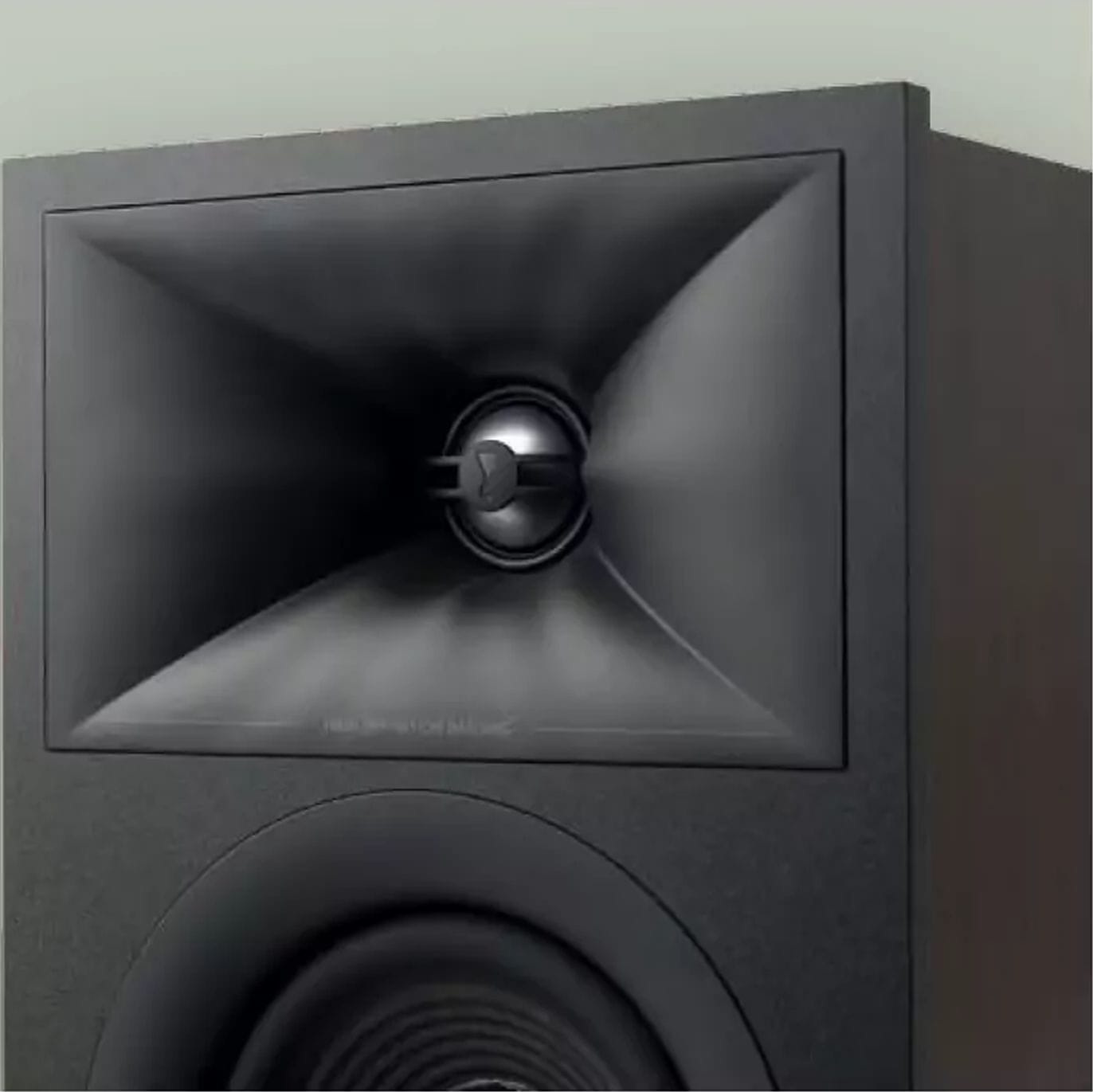
POWER CARRIER: The next-generation HDI tweeter substantially contributes to the excellent sound of the JBL 240B.
Captivating Sound
These compact speakers from California sound lively, agile, and surprisingly neutral, with a slight emphasis on the upper bass/kick range. The tweeter gives the JBL 240B a crisp, engaging character all the way up to the upper midrange. Thanks to the waveguide’s focused dispersion, you can easily adjust the treble clarity by angling the speakers.
Don’t expect very deep bass, but they do offer a solid punch down to around 80 Hz. When placed near a wall in a small room or used nearfield, they can get by without a subwoofer, though with minor compromises.
At first, the woofers can sound a bit “tight” in the midrange and upper bass, but this clears up after a few hours of break-in. While the 240B may not aim for audiophile purity, it confidently delivers quality hi-fi sound.
The only real drawback is the limited soundstage. The smallest model in the Stage 2 series can’t quite create a vast image in terms of depth or width.
JBL Stage 240B Performance Measured
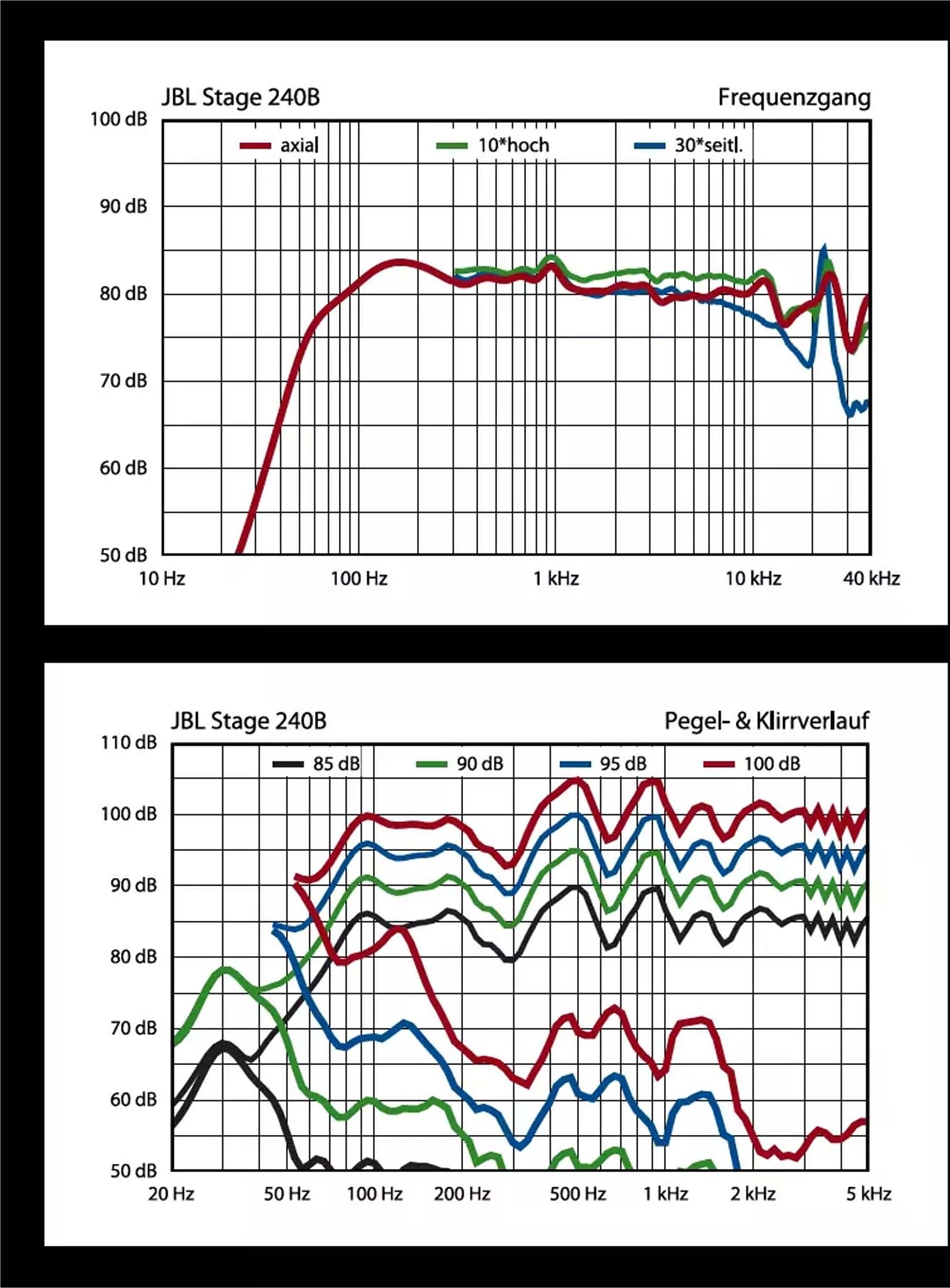
The frequency response is well balanced overall, with a slight rise around 1 kHz. The waveguide tweeter narrows dispersion horizontally from about 6 kHz (blue line, 30° off-axis), while the on-axis response is a bit uneven from 12 to 20 kHz. In the bass, the response falls off early, with -3 dB and -6 dB points at 71 Hz and 55 Hz, respectively. It shows quick decay in impulse measurements (not shown). Frequency response and distortion reveal raised distortion (lower curves) in the midrange and bass.
Despite its size, it achieves a respectable maximum SPL of 97 dBgpL, along with an average sensitivity of 82 dB/2 V. There’s a slightly higher yet still acceptable impedance variation between 3.2 and 30 ohms. Recommended amplifier power is around 35–70 W at 4 ohms. AUDIO index on a 10-point scale: 7.1
TECHNICAL DATA
| Brand / Model | JBL Stage 240B |
| Distributor | JBL jbl.com |
| Warranty | 2 Years |
| Dimensions (W × H × D) | 17.5 × 27.2 × 21.7 cm |
| Weight | 4.6 kg |
| Finish / Foil / Paint | – / ● / – |
| Colors | Espresso, Latte |
| Principle | 2-Way, Bass Reflex |
| Room Adjustment | – |
| Special Features | – |
CONCLUSION:
The JBL 240B really shines when used at close range and, paired with a small desktop amplifier, can deliver true hi-fi enjoyment at a desk or in a small student dorm. They’re an ideal “gateway” speaker that can spark a passion for high-quality sound.
Given what JBL’s engineers manage with small drivers in active speakers like the 4305P Studio Monitor, one can only imagine how an active version of the 240B might perform. It could be JBL’s next big hit.
PRO & CON
- + Surprising output for their size
- + Easy to place in many setups
- + Great value for the money
- – Slightly “compressed” midrange
- – Fairly narrow soundstage
TEST RESULTS
- Neutrality: 10/10
- Resolution: 10/10
- Imaging: 9/10
- Dynamics: 10/10
- Bass: 9/10
Sound Rating (max. 100): 48 → 4.8/10
Lab Analysis (max. 50): 35 → 7.0/10
Product Quality (max. 50): 37 → 7.4/10
AUDIO BENCHMARK
Price/Performance: very good
When you purchase through links on our site, I may earn an affiliate commission. Here’s how it works.
JBL STAGE 240B's: The NEW Budget-Friendly, Small SPEAKER King?
Are the small JBL STAGE 240B speakers worth it in today's hi-fi world? In this video, we take a deep dive into these 2-way ...









